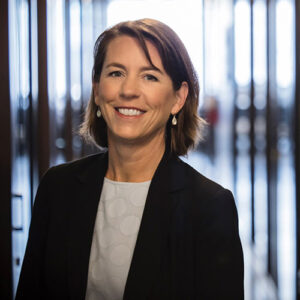Financial Innovations During COVID Show Schools Can Be Nimble When They Have To
Roza & Silberstein: When districts break out of deeply ingrained expenditure habits, it's a big deal. During the pandemic, many of them did just that

Get stories like this delivered straight to your inbox. Sign up for The 74 Newsletter
When a profound disruption like school closures sweeps the nation, it’s no surprise that education innovations bubble up. We’ve heard about learning pods, on-demand tutoring and redesigned schools. But perhaps more noteworthy is another type of innovation that is easy to overlook: innovations in district financial practices.
For decades, school budgets have been frustratingly static, with each year’s expenditures looking much like a carbon copy of the prior year’s. Even when there are longstanding issues with student outcomes or equity, the budget gets built on preceding year figures, seemingly immune to changing context or achievement successes or failures. Teacher pay, the biggest expenditure item, religiously follows a uniform salary scale altered only by a modest percentage adjustment, regardless of whether the district routinely has trouble filling positions in some subject areas or high-needs schools. When called upon to make spending changes, leaders cite rigidities like labor contracts, budget commitments, regulations and more.
So when districts break out of those deeply ingrained expenditure habits, it’s a big deal. And during the pandemic, many of them did just that.
Some of the changes demonstrated that districts can be nimble in how they spend public funds in response to rapidly changing conditions. Districts made spending decisions more frequently than at their annual budget meetings, moved quickly to deploy salary dollars outside the traditional pay scale and granted new flexibility to schools. And district leaders engaged with the public about spending priorities, inviting feedback on what matters most.
Some of these innovations can — and should — outlive the pandemic. Sure, part of the impetus was that districts had an influx of flexible relief money at their disposal, and there’s no doubt changing COVID conditions and tight labor markets forced many leaders to get creative. But that doesn’t mean some of these novel financial practices shouldn’t continue after relief funds dry up.
Here are four financial practices that emerged during the pandemic that we hope will last.
- Nimble midyear adjustments to spending in response to changing conditions. Many districts proved that spending decisions needn’t be limited to annual budget meetings, but can be made quickly in response to immediate needs. Transportation plans not working out? Pay parents to get kids to school. Not enough substitute teachers after the school year starts? Raise the pay rate midyear. Need tutors in a tight labor market? Pay high-schoolers to work with younger students. Even buying and distributing laptops when learning switched to virtual in April 2020 showed that districts can (when needed) make swift financial decisions to meet the moment. Large districts like New York City, Chicago, Philadelphia, Detroit, Spokane, San Diego, Long Beach and Charleston responded quickly with one or more of these strategies.
- Redesigned compensation. After decades of devotion to the traditional pay scale, many districts were suddenly open to more nuanced arrangements to solve their labor challenges. Rather than granting an across-the-board percentage raise, districts like Providence and Detroit awarded targeted pay hikes in areas where shortages were deepest, like special ed. Others, like Nashville, gave a flat, fixed-dollar, non-recurring amount to junior and senior teachers alike. Some dangled private sector-type pay enticements, like signing bonuses, moving costs or retention payments, to be paid out at the end of the year — all representing a break from one-size-fits-all salary schedules largely disconnected from the laws of supply and demand. These moves show that districts can pay people differently in ways tailored to the demands of an uneven labor market. In truth, schools have been short on teachers in areas like special education and science for years, so these kinds of pay practices can help even outside pandemic crisis times.
- Financial flexibility extended to schools. Typically, a district makes financial decisions for all its schools. So principals and teachers have to take what programs or services the district gives them. But in the pandemic, it was clear that different schools had different needs, and no single program was going to work for all. Even some more centralized districts, like Jefferson County, Kentucky, and Clark County, Nevada, responded by sending flexible dollar amounts for principals to use in ways that worked for their students. Schools got what mattered most to them and could clearly see their relief dollars in action. In Albuquerque, amid pushback on a districtwide plan for adding weeks to the academic year, individual schools were given the choice to opt in — and many did!
- Engagement with the public on spending choices. When we tweeted about ESSER-era financial innovations a while back, our friend Sean Gill responded with a thoughtful addition: Districts were getting better at involving the public in those spending decisions. (Thanks, Sean. We agree.) Take Central Falls, Rhode Island, where district leaders invited the community to vote on potential uses for relief funds. Many districts sent out surveys or held public meetings to gather input. Now, much of this engagement came as a result of a federal “meaningful consultation” provision that called on districts to gather input from their communities on deciding how to use ESSER funds. But this nudge toward more participatory budgeting could be an innovation districts can tap going forward to regain community engagement and trust at a time when many are losing students and facing a challenging fiscal future.
While these moves may not be what comes to mind when talking about education innovation, districts were long overdue in updating their financial decision-making processes. But keeping these new practices in place after the pandemic has passed may require careful maneuvering in labor negotiations and pushing back against bureaucratic inertia. In shifting away from the business-as-usual financial practices, school systems are working better to get students and staff what they need when they need it. That’s an innovation worth protecting.
Get stories like these delivered straight to your inbox. Sign up for The 74 Newsletter

;)

